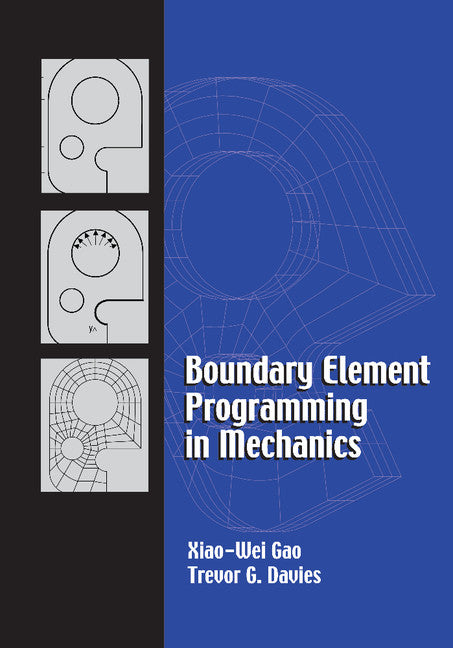Freshly Printed - allow 8 days lead
Couldn't load pickup availability
Boundary Element Programming in Mechanics
This 2002 text describes numerical implementation of boundary element methods for nonlinear analysis in solid mechanics.
Xiao-Wei Gao (Author), Trevor G. Davies (Author)
9781107400252, Cambridge University Press
Paperback / softback, published 21 July 2011
272 pages
25.4 x 17.8 x 1.5 cm, 0.48 kg
Review of the hardback: 'This book will be especially useful to stress analysts in industry, to research workers in computational plasticity, and to postgraduate students taking courses in engineering mechanics.' Zentralblatt für Mathematik und ihre Grenzgebiete Mathematics Abstracts
Nonlinear stress analysis (a branch of solid mechanics) is an essential feature in the design of such diverse structures as aircraft, bridges, machines, and dams. Computational techniques have become vital tools in dealing with the complex, time-consuming problems associated with nonlinear stress analysis. Although finite element techniques are widely used, boundary element methods (BEM) offer a powerful alternative, especially in tackling problems of three-dimensional plasticity. This 2002 book describes the application of BEM in solid mechanics, beginning with basic theory and then explaining the numerical implementation of BEM in nonlinear stress analysis. The authors have also developed a BEM source code for use by the reader, which is available on the book's companion website. This book will be especially useful to stress analysts in industry, research workers in the field of computational plasticity, and postgraduate students taking courses in engineering mechanics.
Preface
Part I. Linear Problems: 1. Introduction
2. Theory of elasticity
3. Boundary integral equations for elasticity
4. Numerical implementation
5. The elastic program code
6. Linear applications
Part II. Non-Linear Problems: 7. Rate-independent plasticity theory
8. Boundary integral equations in elasto-plasticity
9. Numerical implementation
10. The elasto-plastic program code
11. Non-linear applications
12. Epilogue
Appendices: A. Derivation of the kernel functions
B. Shape functions
C. Degenerate elements
D. Elasto-plastic flow theory
E. Domain integral formulations
F. Solution of non-linear system equations
G. Elements of elasto-plasticity
H. Description of input data.
Subject Areas: Aerospace & aviation technology [TRP], Civil engineering, surveying & building [TN], Mechanical engineering [TGB], Engineering: general [TBC]


